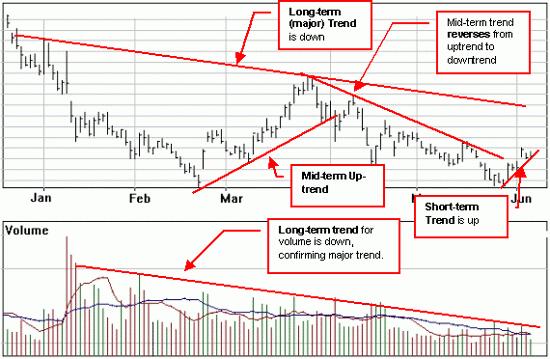Contents
For example, the futures contract due to expire next month does not influence USL more than the contract due to expire in 11 months. Each of the 12 monthly contracts in USL receives an equal weighting. Still, with UNG up so much this year and with no end in sight to gas supply disruption, investors may want to consider this smaller and more tactical energy ETF. And with a year-to-date return of more than 30%, there’s a lot to like about IXC. So if you’re looking to play the biggest of Big Oil stocks out there, the iShares Global Energy ETF is one of the best ways to do that.
Returns vastly exceeded the change in oil prices during a surge in production activity and investor belief that American oil producers could pump profits from the ground for years on end. However, when oil prices declined starting in 2014, small company stocks were hit with losses that vastly exceeded those of major oil company stocks. This gives investors a way to get some exposure to oil, as the fates of these companies are intertwined with the success of oil businesses.

Because Brent Crude often trades at a different price from West Texas Intermediate , BNO can be a useful way of gaining alternative exposure. Specifically, it is tied to futures contracts linked to natural gas delivered at the Henry Hub, Louisiana, terminal and traded on the New York Mercantile Exchange. This is one of the most direct investments you can make in natural gas – and as the price of this fuel has soared, UNG has tacked on a stellar gain of more than 80% so far this year. This has not only made it one of the best energy ETFs, but also one of the best performing funds of any flavor on Wall Street.
ProShares K-1 Free Crude Oil Strategy ETF (OILK)
Oil & Gas Exploration & Production ETF offers great exposure to the domestic oil market. Vanguard is known as 1 of the world’s most prolific providers of low-cost total market index funds, but the company also offers a number of industry-specific ETFs. The best-performing oil ETF, based on performance over the past year, is the United States Brent Oil Fund LP . These ETFs focus on oil as a commodity rather than oil company stocks.
Despite this being a sector ETF, XEG comes with a high-risk rating. This is likely more due to the volatility in month-to-month oil prices, rather than the underlying companies. These energy funds offer exposure to oil and gas stocks, which are some of the rare outperformers in an otherwise miserable year.

Its mobile and desktop-based investing platforms are easy to use, and it offers free ETF and stock trading. The RYE ETF tracks some of the largest oil companies that trade on the S&P 500. The one-year performance of HOU shows the volatility involved in a leveraged oil ETF. Investors should know that leveraged ETFs are riskier than non-leveraged ETFs.
#4. ProShares K-1 Free Crude Oil Strategy ETF (OILK)
We believe everyone should be able to make financial decisions with confidence. The offers that appear in this table are from partnerships from which Investopedia receives compensation. Investopedia does not include all offers available in the marketplace. “Barclays suspends sales of two products linked to oil, volatility.” The ETF has a beta of 2.08 and standard deviation of 60.29% for the trailing three-year period, making it a high risk choice in the space.
If an ETF’s industry classification changes, it will affect the fund flow calculations. Oil services companies are general more volatile than producers. Though the services industry can remain profitable when E&P equiti broker review companies are losing money, at least for a short period, services revenue and profits sharply follow drilling and transportation needs. Thus, when producers are cutting costs, service company earnings will fall.
- The energy sector in Canada has always been a great industry to invest in.
- ZEO is an ETF from the BMO global asset management group that was established in 2009 and trades on the Toronto Stock Exchange.
- Based on the nature of this fund, UGA is more towards offering a short-term tactical tilt towards a specific corner of the energy market.
Oil ETNs, or exchange-traded notes, are similar to oil ETFs in that they are both traded on securities exchanges and can be bought and sold throughout the trading day, similar to stocks. A major difference between ETFs and ETNs is that ETFs are investment companies registered by the U.S. Securities and Exchange Commission, and ETFs actually own the underlying assets that you, as an investor, own a part of. ETNs do not own an underlying portfolio of assets, and instead are made up of unsecured debt obligations.
The fund is up about 40% so far this year thanks to rising oil and gas prices, proving that you don’t have to sacrifice performance when you take a truly diversified approach like this. But keep in mind that integrated oil giants like Exxon, MLPs that are far focused on infrastructure, and alternative energy stocks don’t make it on the list at all. This is a pure play on exploration and production – meaning that in many ways, it’s a pure play on oil and gas prices.
Are Oil ETFs a Good Investment?
The index mirrors the returns through an unleveraged investment in futures contracts in the crude-oil market. The Index may combine several contracts with different expiration dates. There are six distinct oil commodity ETFs that trade in the United States, excluding inverse and leveraged ETFs as well as funds with less than $50 million inassets under management .
And with a generous dividend yield for shareholders, there is a lot of incentive for low-risk and income-oriented investors to consider exposure to this top energy ETF. Since AMLP only focuses on these kinds of companies, its dividend yield is double that of many other energy ETFs. It’s also far more stable as a result, as storage and transportation of energy is reliable and relatively laughing at wall street insulated from commodity price volatility that can upset drilling or refining operations. Energy stocks and exchange-traded funds were a popular bet heading into 2022. So far, so good – the sector has been by far and away the best performer as the end of the year nears. The lower the average expense ratio for all U.S.-listed ETFs in an industry, the higher the rank.
For a well-diversified portfolio, investors should look to consider adding some of these best Canadian Oil ETFs to their holdings. Suncor was founded way back in 1919 and has been a mainstay in the Canadian energy sector ever since. A great example of this was the COVID–19 pandemic, where the price anna kharchenko of oil plummeted, and there was an overabundance of oil supply. Canadian investors can buy Oil ETFs like HOG and HXE with no trading fees for buying or selling. As mentioned, RYE trades on US markets so Canadian investors will likely need to pay foreign exchange to buy shares in US dollars.
Vanguard Total Stock Market…
It does not affect the objectivity of our evaluations or reviews. Investors interested in gaining access to the oil sector should do so via an Oil ETF. The energy sector plays a crucial role in the overall economy. This ETF tries to produce twice the inverse daily performance of the Bloomberg WTI Crude Oil Subindex.
In March 2022, Barclays halted sales of OIL notes due to an administration error. Data is solely for informational purposes and not for trading purposes or advice. The best-performing oil ETF based on five-year performance is the United States Brent Oil Fund LP. Keep in mind, the best-performing investment today may not be the best one next year — or even next week. This may influence which products we review and write about , but it in no way affects our recommendations or advice, which are grounded in thousands of hours of research.
